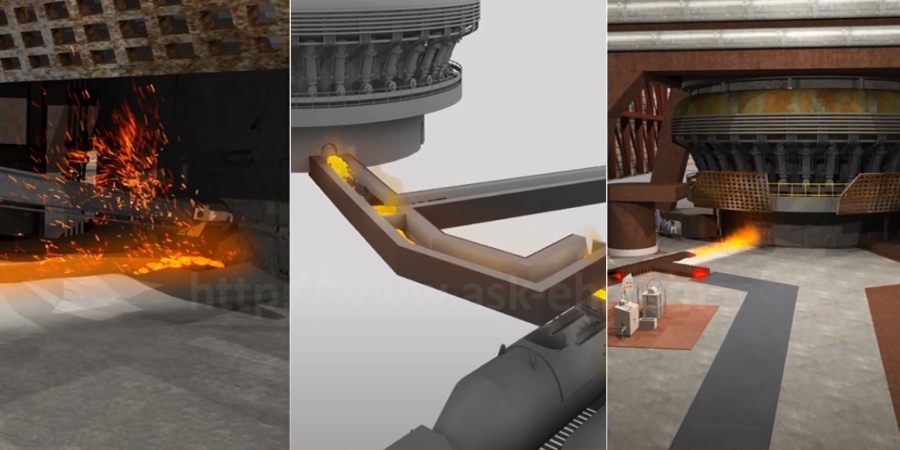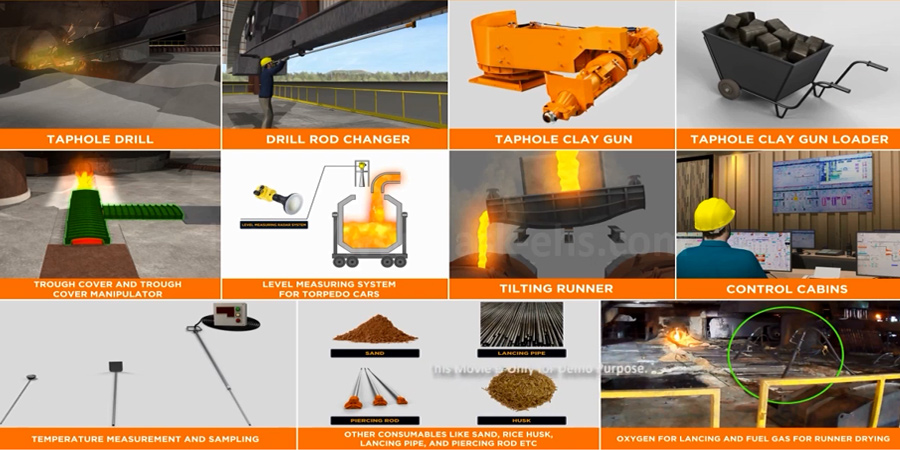Developing customized 3D animated videos of Cast House Operation – Key safety training challenges and solutions

A reliable and trouble free cast house entails good functional design, operational practice, refractory technology, automation and environmental requirements. It also happens to be the most labour intensive area in the entire Blast Furnace process. Training this workforce has always posed huge challenges for safety teams across the industry.
One look at some of the major hazards of cast house operation is enough to shock one’s senses. Thankfully, for every major hazard there are more than adequate control measures as well. By no means though, is the danger eliminated – it still remains. Here’s a look at some of the major hazards;
- Overflow of hot slag from runner
- Hot metal splinter
- High radiant heat, fumes and dust from the molten metal / slag
- Gas leakage
- Movement of cranes

Appropriate Safety Training is, perhaps, the only means and saving grace for ensuring safe operation.
Conventional safety training has relied on classroom sessions, reading etiquettes and some practical training. But as some of the hazards would suggest, Cast house operation includes intricate details that are otherwise impossible to explain without adequate pictures / images or any other means. Most safety teams would use diagrams, actual images / photographs and at best, a conventionally animated (2D / line drawing) for tutoring audiences.
This is where 3D animated videos come to the aid of safety trainers. There are other simulative training methods that corporations are using as well – like Augmented / Virtual reality, Simulation training rooms etc. However, 3D animation movies happens to score over these methods because they are cost effective, easily produced and can be used for mass training (batches of training)
Let’s take the example of gas leakage, which is one of the hazards that workers have to look for, in cast house operation. Steel is produced in some of the most extreme conditions imaginable – intolerably high temperatures, noise and heavy machinery. Carbon Monoxide – a highly toxic and flammable gas, blast furnace gas – a by-product that is used as fuel and converter gas, are generally produced during its operations. Any of these can escape through leaks and defects in closed and confined spaces like gas tanks or pipes. These leaks have the potential to cause major catastrophes and harm to human life and limb (as is evident in one such accident: https://www.hindustantimes.com/india/gas-leak-in-steel-plant-blast-furnace/story-CGEskr4WpuDS5yoatSA0nI.html)
Creating exact replicas / 3D models of each of the components involved, one is able to produce a movie that exactly explains how gas leaks can occur. At the same time, control measures, corrective and preventive actions (CAPAs) can also be clearly visualized and translated into an animation movie and one is able to recreate an accident / incident utilizing the exact and accurate sequence of events. This allows audiences to absorb the shock / impact and retain information in their brains.
The best benefits of 3D animation movies;
- Use narration as a strong measure to convey messages – in any language
- Recreate near misses, incidents and accidents (even hypothetical ones) for explaining critical aspects of the operation
- Capture intricate details of machinery, processes, objects, substances or any other items through accurately translated 3D models
- Broadcast the movie through any means – large screen, computer screens or screens of hand-held devices like smartphones / tablets
Play the movie in loop anywhere – rest rooms, production areas, training rooms – and consistently train workforces


